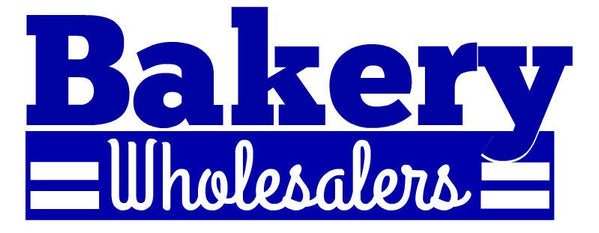-
What are the key differences between a grill and a griddle?
A griddle provides a flat cooking surface heated from underneath, while a grill has grates that allow open flames to directly reach the food. Griddles offer more even heat distribution and are better for cooking smaller items like eggs or pancakes, while grills are ideal for achieving char marks and imparting smoky flavors10. -
How do I choose the right size griddle for my kitchen?
Consider factors such as your menu, kitchen space, and hood size when selecting a griddle. Allow six inches on either side of your unit for additional hood space, and choose a size that can accommodate your cooking needs while fitting within your kitchen layout11. -
What are the advantages of using a commercial griddle?
Commercial griddles offer versatility, allowing you to cook a wide variety of foods quickly and efficiently. They provide consistent heat distribution, which is crucial for achieving optimal cooking results and enhancing flavors in prepared dishes8. -
How do I properly clean and maintain a commercial griddle?
Clean the griddle after each use by scraping off food residue and wiping it down with a towel. Perform weekly deep cleaning sessions, paying special attention to burners and underneath the appliance. Regular maintenance is critical to prevent buildup and ensure optimal performance2. -
What type of griddle plate material is best?
Common griddle plate materials include steel, stainless steel, and chrome. Each material offers different properties affecting heat distribution and maintenance requirements. Consider factors such as heat retention, ease of cleaning, and durability when choosing a plate material8. -
How do I season a new griddle?
To season a new griddle, clean it thoroughly, apply a thin layer of oil, and heat it until the oil burns off and stops smoking. Repeat this process several times to build up a non-stick surface and prevent rust3. -
What are the benefits of adding a clamshell attachment to a griddle?
Clamshell attachments can significantly increase productivity by allowing you to cook both sides of food simultaneously. They are particularly useful for high-volume restaurants and can help reduce cooking times while maintaining food quality7. -
How do I troubleshoot uneven heating on my griddle?
Uneven heating can be caused by food residue and grease buildup. Regularly clean the griddle surface and check for debris. Ensure the appliance is level and consider having a professional inspect the heating elements if the problem persists2. -
What's the difference between manual and thermostatic controls on a griddle?
Thermostatic controls allow you to set an exact temperature, making them ideal for delicate items and breakfast foods. Manual controls offer more general high, medium, and low ranges, suitable for cooking lunch items like burgers and bacon11. -
How thick should the griddle plate be?
Plate thickness affects heat retention and recovery times. Thinner plates (3/4 inch or less) are suitable for breakfast items, while thicker plates (1 inch or more) are better for high-volume cooking of frozen items and meats11. -
Can I use a griddle for outdoor cooking or catering events?
Yes, many griddles are designed for outdoor use and portability. They are excellent for catering events, offering versatility and the ability to cook large quantities of food quickly12. -
How do I prevent food from sticking to the griddle?
Use plenty of oil when cooking and ensure your griddle is properly seasoned. Check for any cracks in the seasoning and re-season as needed. Additionally, make sure the griddle is preheated before adding food3. -
What's the best way to cook eggs on a griddle?
Cook eggs on medium-low heat for best results. Ensure the griddle is properly seasoned and use enough oil or butter to prevent sticking. For sunny-side-up eggs, cover them briefly to help cook the top3. -
How do I adjust the griddle for different types of food?
Use different temperature zones on your griddle for various foods. For example, use higher heat for searing meats and lower heat for delicate items like eggs or pancakes. Some griddles allow you to set different temperatures for different sections11. -
What safety precautions should I take when using a commercial griddle?
Ensure proper ventilation, keep flammable materials away from the griddle, and train staff on proper use and emergency procedures. Regularly check gas connections and follow local fire codes and regulations1. -
How do I deal with grease buildup on my griddle?
Implement a daily cleaning regimen that includes scraping off food residue and applying a cleaner designed for griddles. For tougher grease, use a grill brick or scouring pad. Regular cleaning prevents grease accumulation and maintains griddle performance2. -
What's the difference between gas and electric griddles?
Gas griddles typically offer quicker heat-up times and faster recovery, making them ideal for high-volume cooking. Electric griddles provide more precise temperature control and are often easier to move around the kitchen8. -
How do I know when it's time to replace my griddle?
Consider replacing your griddle if you notice persistent uneven heating, frequent breakdowns, or visible damage such as warping or deep scratches that affect cooking performance. Also, if your griddle no longer meets your kitchen's capacity needs, it may be time for an upgrade15. -
Can I use metal utensils on my griddle?
While many griddles are designed to withstand metal utensils, using non-metal tools can help prolong the life of your griddle surface. If you do use metal utensils, be careful not to scrape too aggressively to avoid damaging the seasoning or surface3. -
How do I level my griddle for proper grease management?
Locate the grease trap on your griddle and adjust the unit's level accordingly. Ensure that liquids and food drippings run towards the grease trap for proper drainage and to prevent food from burning14.
20 Frequently asked questions about griddles
Here are the top 20 questions that restaurant owners, cooks, and chefs have about griddles, along with brief answers:
